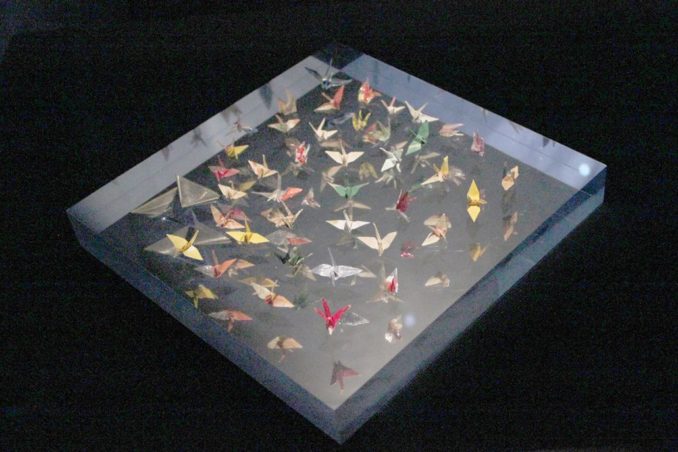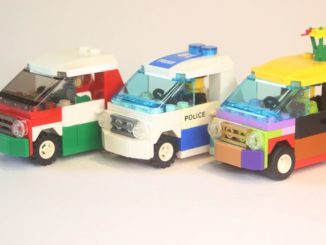This is a note about my visit to the Peace Memorial Museum at Hiroshima. Some of what follows is gruesome.
I’ve long been interested in military history, and I’ve been fortunate to visit the site of three historic events.
I’ve stood, alone in the early morning, at the water’s edge on Sword beach. Looking inland, across the flat open sand towards the beach huts, felt eerie. Pegasus bridge is still there, although replaced by a newer bridge. The old one has been left beside the canal and a small museum. When I visited Normandy there was still a paratrooper in St-Mere-Eglise, hanging from the church spire by his parachute cords.
I’ve been to Waterloo and climbed the steps of the monument there, the Butte de la Lion. At ground level there is a perceptible ridge, which Wellington counted upon in choosing it as the place to make his stand, but even a hundred steps up the Butte this vanishes and the Belgian countryside looks flat and even.
And recently I went to Japan and took the chance to go to Hiroshima, which is today a modern city of two million people with a station served by the bullet train. It was a baking hot day. I got off the train and caught a bus to the Atom Dome (Genbaku Dome-mae). This building was 175 yards from the hypocentre when the bomb detonated some 2,000 feet in the air, and somehow it survived.
There were only three planes in the flight – Enola Gay and two observers. I’ve read somewhere that the All Clear was sounded, as only three planes could not be an air raid. By 1945, air raids on the Japanese mainland were taking place and schoolchildren were drafted in to help construct firebreaks in cities. Hiroshima had never been bombed, so there were some who questioned the need for firebreaks.
At a quarter past eight in the morning of 6th August 1945, work on the firebreaks stopped. Everything stopped, as the force of 20,000 tons of TNT detonated above the city. Everyone in the Atom Dome died instantly but the building survived. Today it is home to groundsmen cutting the grass, and a stray cat, and tourists like me. Outside it I met one of the last remaining survivors of the day, a man who was an unborn baby in 1945 – an In Utero Survivor.

© Jim Walshe, Going Postal 2019
I went on to the Peace Museum, set in a park containing a cenotaph and the Children’s Peace Monument. It was school trip season and there were several groups of schoolchildren there, each group very distinctive with the children wearing coloured baseball caps to identify them to the teachers.
Admission to the museum is 200 Yen, about £1.30. Tourist attractions in Japan such as Himeji Castle charge 1,000 Yen or about £6.50 by comparison.
The museum tells the story of what happened that day, and of the aftermath. At the start of your journey through the exhibits, there is an animation of the detonation, a three-dimensional projection looking down on a model cityscape. This starts with a glimpse of the bomb tumbling through the air towards its target, as if you were an observer in Enola Gay, and I found that glimpse oddly shocking.
The first effect was the blast. Then the heat, which set light to anything not made of stone. Then, as cooking fires upset by the blast started secondary blazes, the firestorm spread.
The museum has many personal stories. It tells of the lady who was trapped under a fallen beam, and the volunteer who could not free her. The Japanese are a polite people. He apologised to her. She burnt to death.
It tells of the man who was vaporised by the blast, and whose only trace is his shadow in the stone behind him. That stone is in the museum and you can still just make out the shadow he left. His memorial is in the altered carbon that was etched into the stone.
It tells of the people whose clothes caught fire from the bomb. It was a good day to be wearing white, as it reflected more of the heat.
It tells the story of the two-year-old girl, Sadako Sasaki, who survived the bomb but developed Leukemia. She folded every scrap of paper she found into paper cranes, believing the legend that folding a thousand cranes would grant her health again. She died in 1955, aged 12, having completed 664 cranes.

© Jim Walshe, Going Postal 2019
The museum goes on to tell of the aftermath. There was a black rain containing radioactive material, and exhibits include clothes with black marks from the rain. The rain contaminated the water, and people died from drinking it. By the end of 1945, some 140,000 people had died from the bomb and its after-effects. It has been said that a single death is a tragedy, and 100,000 deaths is a statistic. The museum goes a long way to disprove that, by telling the stories of so many individuals.
Then the museum goes onto the politics, both of the course of the Manhattan Project and of the end of the War.
The project to build the bomb cost nearly $3 billion, a huge sum even today, and one of the exhibits is a memo to President Truman from one of his advisors casting doubt on the success of the project and counselling him to get a second group of scientists in to audit the science. My suspicious mind wonders about this. The outcome of the war was not in doubt by this stage, and politicians were already jockeying for position in the post-war world. Pausing the project as suggested could have left Russia as the only nuclear power at the start of the Cold War.
The bomb was dropped on 6th August 1945. Russia declared war on Japan on the 8th, and a second bomb was dropped on Nagasaki on the 9th. Japan surrendered unconditionally on the 15th and an occupying force of US troops arrived. Many of the photographs in the museum were from US Military archives.
My visit to the museum was very sobering, I can’t put it any other way. I’ve read the arguments that have raged ever since, about whether the bomb saved the lives of Allied soldiers and shortened the war, and the debate about whether a demonstration target without people on it would have been better, and why did they drop the second bomb. Visiting the museum didn’t make me want to join CND, but it did what I think it was intended to do in bringing home the human cost of the bomb.
Shortly after the war ended, the Russians developed their own bomb, and then the British, the French, the Israelis, the Chinese, India, and Pakistan followed suit. And North Korea.
For a time we lived through the politics of MAD – Mutually Assured Destruction – and we’ve come close a couple of times. The Cuba missiles crisis of 1962 comes to mind now, although at the time it made no impression on this five-year-old.
Today we don’t live under the fear of nuclear war. SALT and START and the like have had their effect, and the break-up of the Soviet Block has taken away the superpower stand-off. I think the danger today is less of a war between states and more the risk that a nutcase with a suitcase will take one of our cities for his cause.
I don’t believe in unilateral nuclear disarmament. If your rival carries a big stick, you would be foolish to put your own stick beyond use. But I do think that we should make every effort to stop the technology spreading to anyone who might actually use it in war. I think that the Israelis, who are supposed to have destroyed Iran’s centrifuges with the Stuxnet virus, did us all a favour.
The museum’s message is one of peace, and no-one can disagree with that. But turning the other cheek is not an optimal survival strategy. There are no easy answers.
© Jim Walshe 2019
The Goodnight Vienna Audio file
Audio Player



